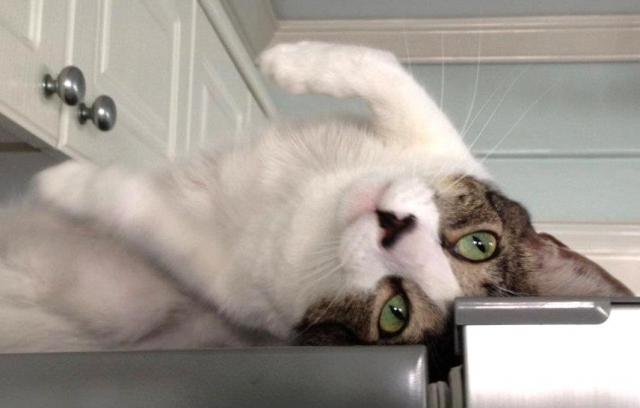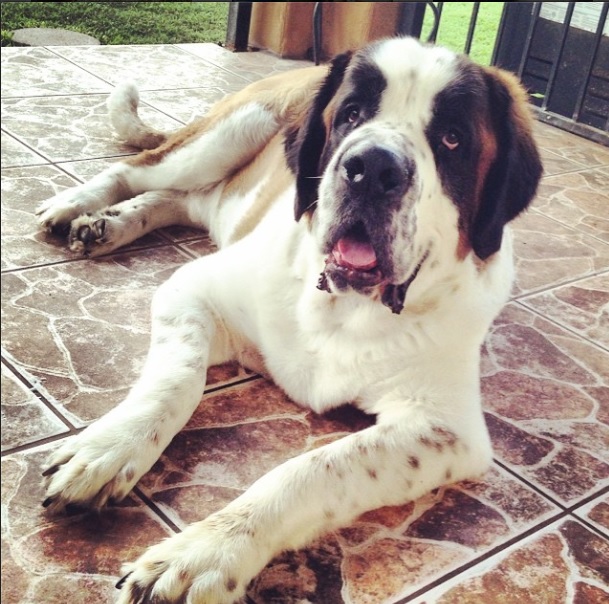Four Ways to Make Your New Home Pet-Friendly [Home Depot Guest Post]
You've moved your belongings, yourself and your pet, but the work isn't done yet. Here are a few tips from Home Depot's Sarah Kellner that can help you make your new house a warm and pet-safe home.
4 Musts for Making Your New Home Pet-Friendly
Being a pet owner is a lot like being a parent. The responsibility of feeding, protecting and caring for your pet falls solely on your shoulders, and when they look at you with their big, sweet eyes, how could you not want to give them the world?
Just like toddlers will find every dangerous nook and cranny in a new home, so, too, will pets -- especially curious puppies and kittens. Pets can find places in your home you didn't even know existed! That's why it's so important when relocating with your pet to a new city that you take the proper precautions and pet proof your new digs.
Look at the new space from your pet's point of view: where would you hide; what would you scratch or chew?
While a certain amount of pet proofing happens through trial and error, there are many things you can do to make your home safer, regardless of where you live or what type of pet you have.

The Kitchen
Your kitchen is a veritable treasure trove of possible dangers for your pet. Be sure to keep your furry friends out of the cabinets by installing child-proof latches on them and block any small spaces like gaps between cabinets where small pets could get lodged. Since dogs are heavily driven by their sense of smell, be sure to keep your trash cans sealed with covers or secured away from pets inside a latched cabinet or pantry. Also, be sure to keep all food off the ground and out of reach, because while the food itself may not be harmful to your pet, the packaging easily could be.
Chemicals & Harmful Substances
One of the most important aspects of pet proofing is identifying all of the potentially poisonous liquids and substances in your home and keeping them well out of reach. These kinds of common household substances include cleaning agents, laundry detergents, medicines, toiletries, cosmetics, and even toilet bowl water. If you have houseplants, do your research to ensure that they are not harmful to your pet. Common examples include lilies, corn plants, jade plants, and aloe.
Your garage can also contain a staggering number of harmful chemicals like fertilizer, pesticide, paint, gas cans and antifreeze. Even one taste of antifreeze can be fatal to pets, so be sure to store it on a high shelf and keep it off of your garage floor and driveway, too.
Appliances
Household appliances are another area to add to your pet safety checklist. We all know that cats are attracted to warm hiding places, so it only makes sense that they gravitate toward clothes dryers. All you need to do to avoid tragedy is to always check inside the dryer before turning it on. When cooking, try to get in the habit of using back burners to keep curious noses away from the heat and always turn your pot and pan handles in toward the middle of the range.

Cables & Cords
Every pet owner can attest that animals love chewing on and playing with cords. As part of your cable management system, use cord cover kits wherever possible to keep entertainment center cords, desk cords, and other hubs organized and secured away from pets. You should also keep dangling lamp cords fastened to the furniture or wall, run under the carpet, or enclosed in chew-proof PVC pipe.
What pet-proofing tricks do you use in your home?
Sarah Kellner is a pet lover and likes to share great DIY advice and tips for The Home Depot. She comes up with some creative solutions to make your life with pets easier. To find cord covers and other cable management products, visit The Home Depot website.
